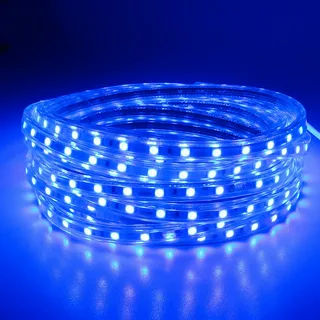At one end of a PoE system is usually a switch or hub. At the other end of the cables are the devices that require both Ethernet connectivity and power. Each of these devices is referred to as a PD device (Powered Device).
For PoE, the required differential voltage of 48 V is applied to the Ethernet cable via power sourcing equipment (PSE). When the PSE resides in the Ethernet switch or hub, the IEEE standard calls it an endpoint PSE.
The IEEE standard provides two alternative configurations for the endpoint PSE to provide power flow in the cable. In Alternative A, the PSE applies a differential voltage between the two twisted pairs carrying the Ethernet data. This is the only possible option when using CAT5 cable with only two shielded twisted pairs.
In alternative B, the PSE applies the voltage between the two spare pairs. This method is preferred for CAT5e and newer four twisted pair cables. If the cable is broken so that the PSE applies power between the switch or hub and the PD device, it is called a midspan PSE.
This configuration also supports the Alternative A (power flow in Ethernet data pair) and Alternative B (power flow in spare pair) configurations.
How to install PoE lighting?
Power over Ethernet (PoE) or PoE Lighting is a convenient and practical way to both connect to the network and transmit power over the same cable. However, the further development brings with it problems for the developers with regard to upwards and downwards compatibility as well as the selection of the right configuration, the right cable and the suitable interface ICs. These ICs must not only offer the core functionality of PoE, but also the latest features for a secure power supply.
PoE handshake
When a PSE detects a new network connection with a PD device, a short handshake protocol is initiated between the PSE and the PD device. For the PSE, this handshake first determines whether it is indeed a PD device that needs power. The PSE then needs to determine how much power the PD device requires.
From the perspective of the PD device, this handshake determines how much power the PSE can deliver. Ultimately, the handshake allows the PSE to safely power the PD device and safely remove power if the PSE detects that the PD device has been removed from the network.
During the handshake, there is a fixed resistance to the PSE voltage, called the signature resistance, to limit the inrush current during the voltage pulse. Based on the inrush current, the PSE classifies the PD device as a Type 1-4 device according to its power requirements (see above).
However, when a PSE again detects power consumption by a PD device, it sends a voltage pulse to the PD device to determine the power requirements of the PD device.
For example, some older, low-end, midspan PSEs used in some of the earliest industrial PoE lighting systems did not have any current limiting at all. Also, some of the early PSEs injected the voltage into the cable with no handshake, requiring current limiting from the PD device. The current limitation of the TPS2372 enables the PD device to be safely connected to almost any PSE.
- In implementation, a single Ethernet endpoint can be connected to multiple lighting nodes. For example, a single command sent from the switch or hub to a single Ethernet-enabled device with eight lighting nodes can request the nodes to turn on only lights four and seven and not the others.
- The PoE system must be paired with devices with appropriate LEDs in terms of wattage (in lumens), color temperature (in Kelvin), and power consumption. The LED manufacturer Würth Elektronik offers a product line that is designed for industrial and general indoor lighting.
- The cool white LEDs LED lighting 158301250 with 5000 K, for example, measure only 3 mm × 1.4 mm, but deliver 133 lm/W. So they have an extremely high efficiency and are particularly well suited for PoE-based applications for industrial lighting solutions.
- For self-assembly lighting, several LEDs can be soldered onto a circuit board according to the special system requirements.
- The new 802.3bt draft standard specifies a reduced MPS duty cycle of 1.875%, which translates to a one-tenth reduction in average power consumption (just 0.2mA).
Conclusion
PoE can greatly facilitate the implementation of intelligent lighting systems in offices or in industry. The right cable ensures a reliable power supply and high-efficiency LEDs are available for DIY lighting.
Choosing the right parts makes the PD device upgradeable and backward compatible. This results in a secure and reliable system that can be used efficiently in intelligent network configurations for years to come. Spanning for years in the market Cabsy has great experience with PoE lighting and how it works for us!


No comments yet